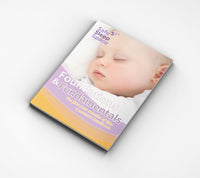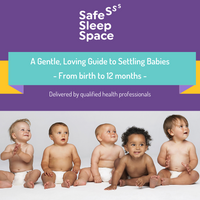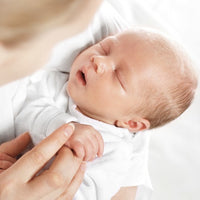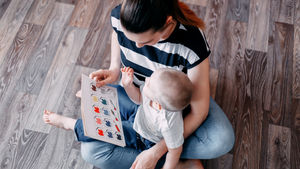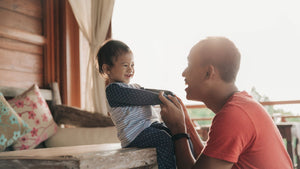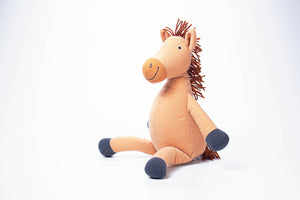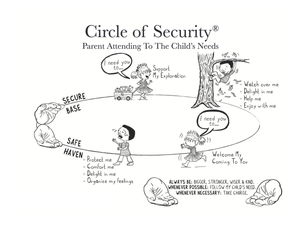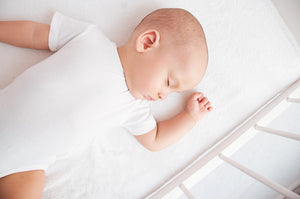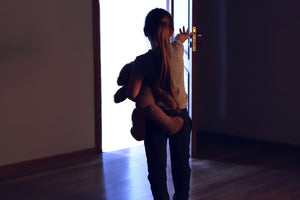Fear of Strangers

Key points
- Stranger danger tends to peak between 7-10 months of age and generally starts to improve from 18 months to 2 years of age.
- Some babies are more social than others and don’t become as distressed by unfamiliar faces.
- There are benefits in parents and caregivers staying calm and offering gentle reassurance if their baby or child cries when unfamiliar people approach them.
- Introduce new people to your child gradually. It can take time to build a sense of relaxation.
What is stranger anxiety?
All babies go through stages of being scared of strangers. This is a common experience and happens as a normal part of healthy development from around seven months onwards. Even for the most social of babies, some degree of anxiety around unfamiliar people is very normal.
Stranger anxiety is closely linked with separation anxiety – the developmental stage where babies want to stay close to the people they know. While they are different milestones, they are equally as important.
The major difference is that stranger anxiety is reflected by distress when approached by, or left with someone new. Separation anxiety is when a child becomes distressed when their parent leaves, even when they are left with someone familiar to them.
Generally, from between 18 months – 2 years, stranger anxiety becomes less intense.
Sometimes, a fear of strangers extends beyond the toddler years. Children can develop Social Anxiety Disorder, a more complex condition which requires a combination of treatments and therapies. Genetics, environment and biological factors all play a role in whether a child is prone to developing this disorder.
Why do babies become scared of strangers?
At its foundation, stranger anxiety is a protective response centred on a baby and young child’s survival. In the early months of life, babies develop emotional attachments to the people who are best placed to ensure their survival.
Parents and caregivers are the ones who spend the most time with their baby and young child, so it stands to reason that they are the ones for whom the closest bonds are formed. By around seven months of age, this connection is very strong. Babies who feel scared or anxious demonstrate their uncertainty by crying. This again is a survival response to trigger their parent to come at once and attend to their baby’s distress.
Until people become more familiar to a young child, it’s common for protests to occur. But over time and exposure, babies, just like adults, start to feel more secure and less uncertain.
“She’s always been a little on the shy side”
A baby’s temperament will influence their response to strangers. Some babies are very social and don’t seem bothered by change or the unfamiliar. Others are a bit more sensitive and less adaptable. This is not a sign of intelligence or weakness, it’s just another one of the unique qualities which individual baby’s display.
Ways to help your baby and young child with a fear of strangers
It helps parents to stay calm and in control of their own emotions when their child is upset. Sometimes our child’s crying ‘triggers’ uncomfortable emotions in ourselves.
Parents who tend to be more on the shy side, rather than outgoing in social situations, are more likely to have children who take a little longer to warm up socially.
6 top tips to help your child with fear of strangers
- Introduce new people slowly to your child and try not to ‘push’ them onto each other.
- Don’t be dismissive of your child’s protests but similarly, try not to offer too much reassurance. What’s important is that you give the message that you are there and all is right with their world.
- Support your child’s efforts to explore and get to know new people. Through you, they will learn that most people are safe and kind – remember, this process can take years to embed.
- Try using play as a way of introducing your child to new people and experiences. Play is the medium which most children respond to readily as it helps to distract and engage them.
- Bring along your child’s security toy or blanket when they’re meeting people for the first time.
- Arrange meetings at home the first few times so your child is in familiar surroundings.
Stranger anxiety – it takes time to settle
Most children evolve from their fear of strangers once they reach the toddler years. This is when they become inquisitive, more exploratory and use their mobility to move from people when they feel uncertain.
As your child is learning how to warm to strangers, try the following:
- If possible, plan for introductions with one person at a time, rather than a large group of people.
- If your child is starting daycare, arrange for a gentle transition of a couple of hours with you present, until they get to know their carers.
- Think about your own responses to new people and situations. If you’re open and social, your child will learn that this is a good way to respond.
- Be patient and kind. Remember the Circle of Security framework which can be very helpful in understanding a child’s sense of security.
Reassuring other people
It can be very upsetting for parents to see their child distressed, knowing that the quickest fix would be for the unknown stranger to make a quick exit. But we cannot insulate our children from other people, in fact, they need to learn that there are others outside the orbit of their close little world.
Offer explanations, but don’t apologise for your child’s crying. Most reasonable people are understanding and if they’re parents, have probably experienced a similar situation with their own child.
Ask people to just be themselves, if you’re calm your baby will learn to be as well.
Give your child plenty of time to become used to new people before expecting them to be held or cuddled.
Make a point of socialising your baby from a very young age. When developmentally appropriate carry them in a infant carrier facing outwards and position their pram so they’re looking out. Take your baby to social gatherings and on walks. The more faces they see and different people they meet, the more social they will be.
Remember, stranger anxiety is normal. Your job is to be calm and reassuring and have confidence that with time and practice, your child will learn to stay calm around new people.
About the Author:
Written for Safe Sleep Space by Jane Barry. Jane has qualifications in general, paediatric, immunisation, midwifery and child health nursing. She holds a Bachelor Degree in Applied Science (Nursing) and has almost 35 years specialist experience in child health nursing. She is a member of a number of professionally affiliated organisations including AHPRA, The Australasian Medical Writer’s Association and Australian College of Children and Young People’s Nurses.
References
Fear of strangers: babies & young children | Raising Children Network
Social anxiety disorder - Signs, symptoms and treatment | healthdirect
Stranger Anxiety: What It Is and How to Help Your Baby (healthline.com)
